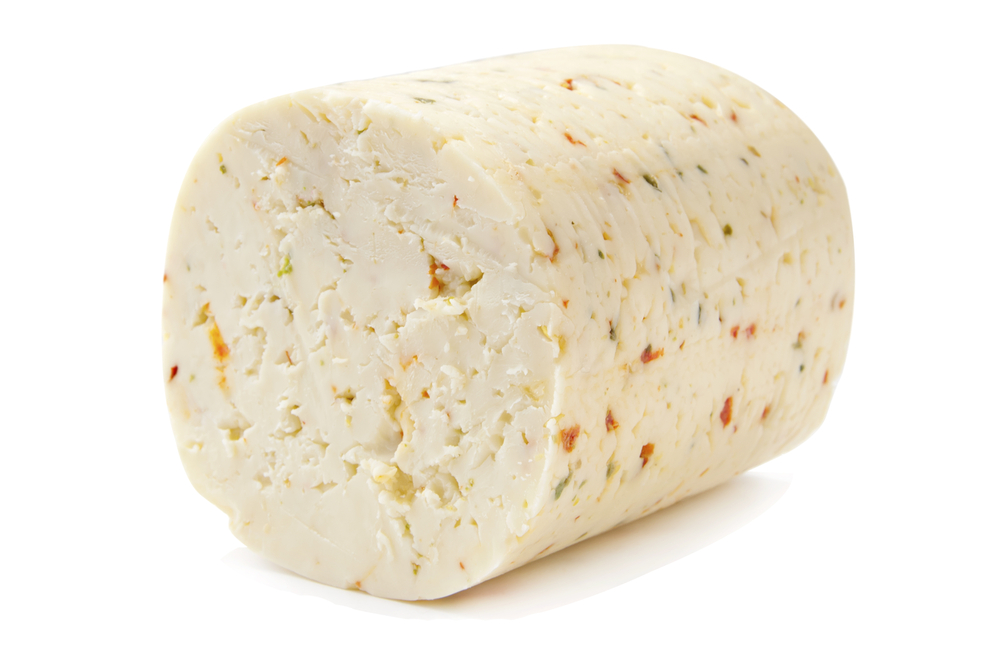Gruyere cheese is a type of Swiss cheese that is known for its unique and complex taste. It is a semi-hard cheese that is made from cow’s milk and has a distinct nutty and earthy flavor.
Many people describe the taste of Gruyere as rich, creamy, and slightly sweet.
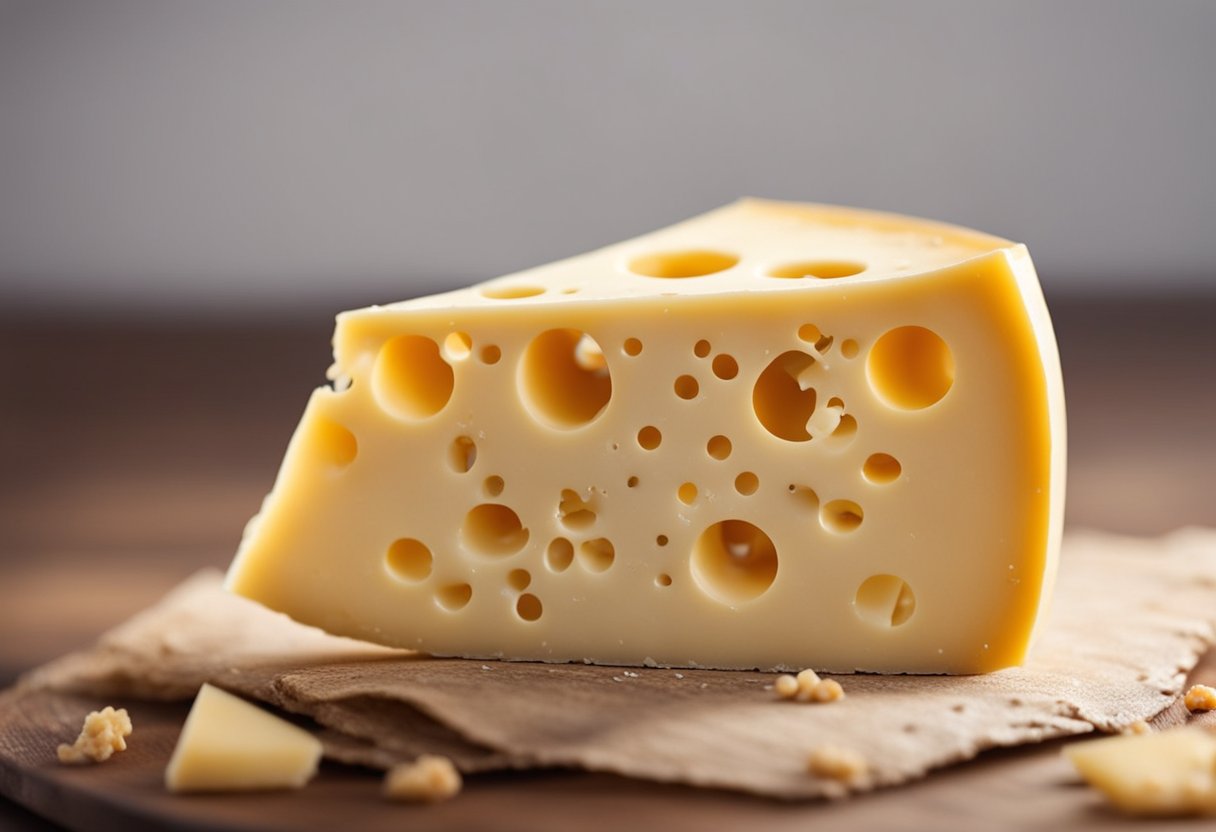
The flavor of Gruyere cheese can vary depending on how long it has been aged. Younger Gruyere cheese has a milder flavor and is often used in sandwiches or eaten on its own.
Aged Gruyere cheese has a stronger and more complex flavor that is perfect for cooking and adding depth to dishes.
Key Takeaways
- Gruyere cheese is a semi-hard Swiss cheese that has a unique and complex taste.
- The flavor of Gruyere cheese can vary depending on how long it has been aged.
- Younger Gruyere cheese has a milder flavor, while aged Gruyere cheese has a stronger and more complex flavor.
The Origin of Gruyere

Gruyere cheese is a hard cow’s milk cheese that originated in the cantons of Fribourg, Vaud, Neuchâtel, Jura, and Berne Switzerland. It is named after the town of Gruyères in Fribourg, where it was first produced in the 12th century.
The cheese is now produced in various regions of Switzerland and France, including the Alpine Comte and Savoie regions of eastern France.
The production of Gruyere cheese is closely regulated by the Appellation d’Origine Protégée (AOP), which ensures that the cheese is made using traditional methods and ingredients.
The AOP also specifies that the cheese must be aged for at least five months, although some varieties are aged for up to two years.
The cheese is made using raw milk from cows that graze on the lush grasses of the Swiss Alps. The milk is heated and mixed with rennet to coagulate the proteins, which are then separated from the whey.
The curds are then pressed into large wheels and aged in special curing rooms that are kept at a specific temperature and humidity.
The Maison du Gruyère in Gruyères, Switzerland is a popular tourist destination where visitors can learn about the history and production of Gruyere cheese.
The museum offers guided tours of the cheese-making facilities and a tasting room where visitors can sample different varieties of the cheese.
In conclusion, the origin of Gruyere cheese can be traced back to the town of Gruyères in Switzerland, where it has been produced for centuries using traditional methods and ingredients.
The cheese is now produced in various regions of Switzerland and France and is closely regulated by the AOP to ensure its quality and authenticity.
The Making of Gruyere
Gruyere is a type of cheese that originates from Switzerland. It is a hard cheese that is made from cow’s milk, and it has a distinct nutty flavor. In this section, I will describe the process of making Gruyere cheese.
The first step in making Gruyere cheese is to obtain the milk. The milk used to make Gruyere comes from cows that are raised on organic farms.
The cows are fed a natural diet of grass, hay, and other forage, which gives the milk a rich and complex flavor.
Once the milk is obtained, it is heated to a specific temperature and rennet is added. Rennet is an enzyme that helps to coagulate the milk and form curds.
The curds are then cut into small pieces and stirred, which helps to release the whey.
After the whey is drained off, the curds are placed into molds and pressed. The cheese is then removed from the molds and soaked in a saltwater brine.
This helps to flavor the cheese and also helps to preserve it.
The aging process is what gives Gruyere cheese its distinct flavor. The cheese is aged for a minimum of three months, but it can be aged for up to a year or more.
During the aging process, the cheese is stored in a cool, humid environment. This helps to develop the flavor and texture of the cheese.
In conclusion, Gruyere cheese is made from cow’s milk, rennet, and salt. The aging process is what gives it its unique flavor and texture.
The cows that produce the milk are raised on organic farms, which helps to give the cheese a rich and complex flavor.
Characteristics of Gruyere
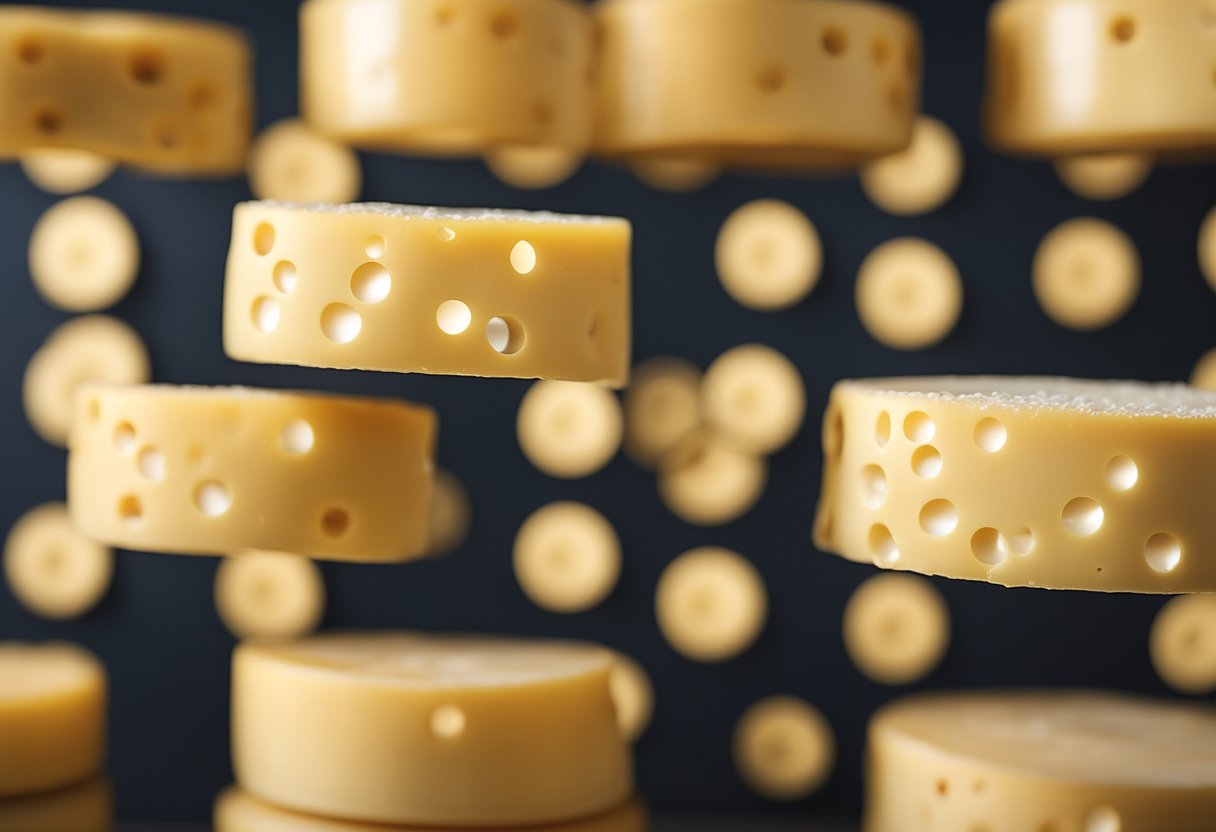
Gruyere is a type of Swiss cheese that is known for its unique flavor profile. As a high-moisture and firm cheese, Gruyere has a pale yellow color and small holes, also known as “eyes,” that are formed by gas bubbles created by bacteria during the cheese-making process.
In this section, I will discuss the taste profile, texture, and appearance of Gruyere cheese.
Taste Profile
Gruyere cheese has a distinct nutty and fruity flavor that is sweet but also slightly salty. When young, Gruyere cheese has a creamy and mild taste that becomes more earthy and complex as it ages.
This cheese has a unique flavor that is unlike any other cheese, making it a popular choice for cooking and snacking.
Texture and Appearance
Gruyere cheese has a firm texture that is smooth and creamy. It has small holes or “eyes” that are characteristic of Swiss cheese.
The cheese has a pale yellow color that can range from light to dark depending on the age of the cheese. The cheese is often grated or melted, making it a popular ingredient in many dishes.
In conclusion, Gruyere cheese has a unique flavor profile that is both nutty and fruity, with a sweet and slightly salty taste.
Its firm texture and small holes make it a popular choice for cooking and snacking. Whether you are a cheese lover or just looking to try something new, Gruyere cheese is definitely worth a try.
Types of Gruyère
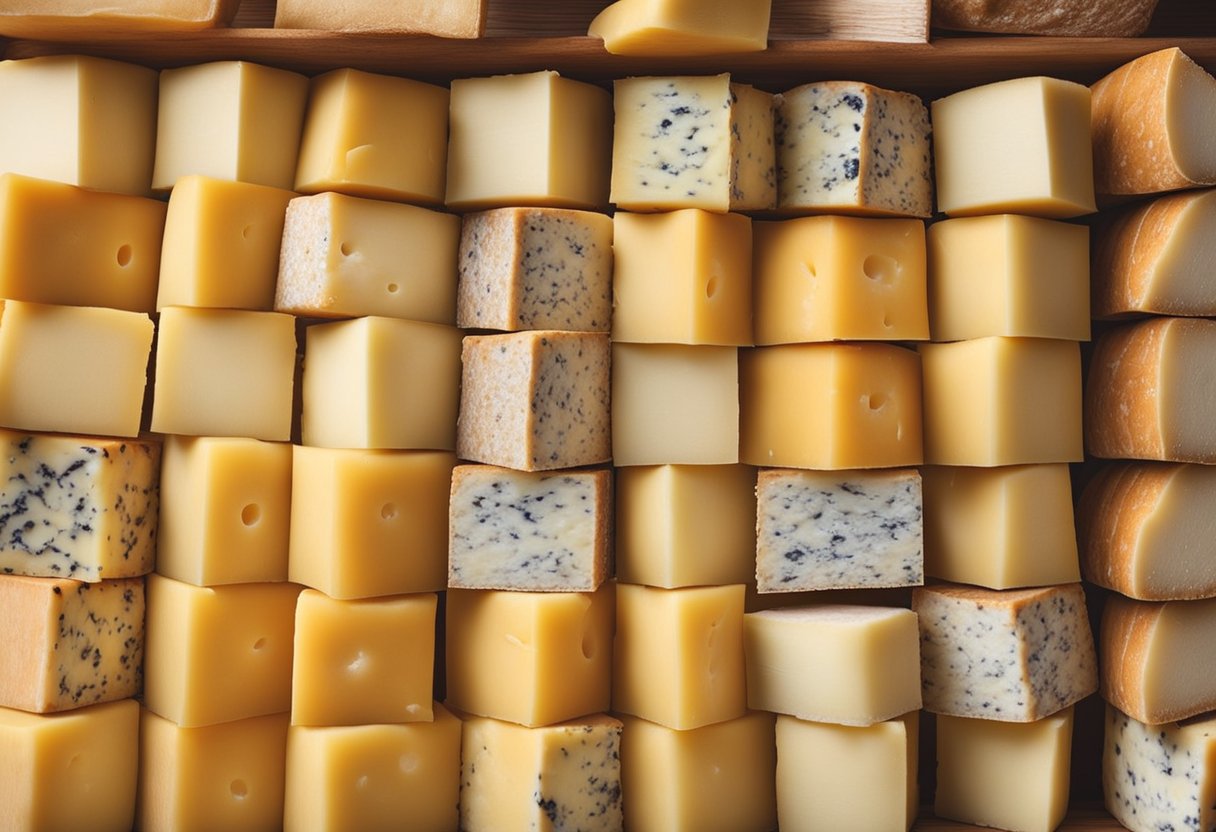
As we mentioned earlier, Gruyère cheese is a type of Swiss cheese that comes in different varieties. Here are some of the most common types of Gruyère cheese:
- Gruyère Classic: This is the most widely available type of Gruyère cheese. It has a nutty and slightly sweet taste, with a firm texture that makes it perfect for melting.
- Gruyère Réserve: This type of Gruyère cheese is aged for a longer period, typically between 10 and 14 months. The longer aging process gives it a more complex flavor, with a slightly earthy and fruity taste.
- Gruyère Bio: This is an organic version of Gruyère cheese. It is made from milk that comes from cows that are fed with organic feed and raised in organic pastures. It has a similar taste to Gruyère Classic, but with a slightly creamier texture.
- Gruyère d’Alpage: This is a type of Gruyère cheese that is made exclusively from the milk of cows that graze in the Alps during the summer months. It has a more intense and complex flavor than other types of Gruyère cheese, with a slightly nutty and fruity taste.
It is worth noting that Gruyère cheese is often compared to other types of Swiss cheese, such as Emmental and Jarlsberg.
While these cheeses have a similar texture and appearance, they have slightly different flavors. Emmental has a milder taste and larger holes, while Jarlsberg has a sweeter taste and smaller holes.
Comté and Beaufort are two other types of French cheese that are often compared to Gruyère. Comté has a nutty and slightly sweet taste, while Beaufort has a more earthy and fruity flavor.
For those who are looking for a Gruyère substitute, American Swiss cheese is often used as a replacement in recipes. While it has a similar texture, it has a milder taste and is less complex than Gruyère.
Overall, Gruyère cheese is a versatile cheese that can be used in a variety of recipes. Its unique flavor and texture make it a popular cheese among food enthusiasts and chefs alike.
Culinary Uses of Gruyere
Gruyere cheese is a versatile ingredient that can be used in a variety of dishes. Its unique nutty and earthy flavor makes it a popular choice for cooking, baking, and melting.
In this section, I will discuss some of the most popular culinary uses of Gruyere cheese.
In Sandwiches
Gruyere cheese is a great addition to any sandwich, especially when paired with ham. One classic sandwich that features Gruyere is the Croque Monsieur.
This French grilled cheese sandwich is made with ham, Gruyere cheese, and béchamel sauce. Gruyere can also be used in a classic grilled cheese sandwich for a more sophisticated twist.
In Baked Dishes
Gruyere cheese is a popular choice for baked dishes due to its melting properties. It is commonly used in quiches, mac and cheese, and potatoes au gratin.
When combined with other ingredients, Gruyere cheese adds a distinct creamy texture and subtle sweetness to cheese-infused comfort foods.
In Fondue
Gruyere cheese is also ideal for fondue and dips. It melts beautifully and has a distinct nutty flavor that pairs well with bread and vegetables.
Gruyere is a key ingredient in traditional Swiss fondue and raclette.
Overall, Gruyere cheese is a versatile ingredient that can be used in a variety of dishes. Its unique flavor and melting properties make it a popular choice for cooking, baking, and melting.
Whether you’re making a classic Croque Monsieur, a quiche, or a fondue, Gruyere cheese is sure to add a delicious and sophisticated twist to any dish.
Pairing Gruyere with Other Foods
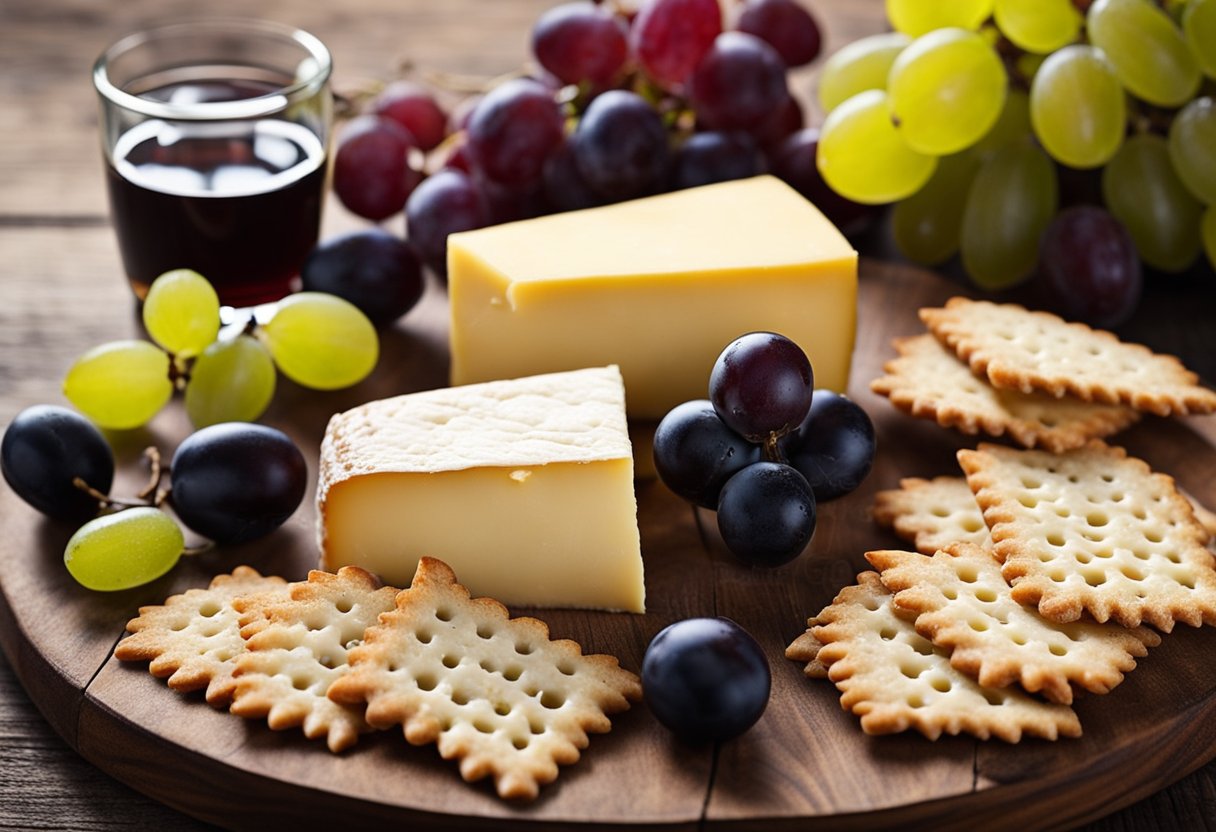
When it comes to pairing Gruyere cheese with other foods, there are many options to consider. Whether you want to pair it with wine, fruits, or charcuterie, Gruyere has a flavor profile that can complement a variety of different foods.
One great pairing option for Gruyere cheese is wine. This cheese pairs well with both red and white wines. For red wine, try pairing Gruyere with a Pinot Noir, which has a light and fruity flavor that complements the nutty flavor of the cheese.
For white wine, try pairing Gruyere with a Riesling, which has a sweet and floral flavor that pairs well with the cheese’s subtle sweetness.
In addition to wine, Gruyere also pairs well with fruits like grapes. The sweetness of the grapes complements the nutty flavor of the cheese, creating a delicious and balanced flavor profile.
Other fruits that pair well with Gruyere include apples, pears, and figs.
Another great pairing option for Gruyere cheese is amber ales. The bitterness of the beer complements the nutty flavor of the cheese, creating a delicious and complex flavor profile.
This pairing is perfect for a casual get-together or a game night with friends.
If you’re looking to create a charcuterie board or cheese platter, Gruyere is a great choice.
Its mild nutty flavor and creamy texture make it a versatile cheese that pairs well with a variety of different meats and crackers. For a more detailed guide on creating a charcuterie board, check out The Spruce Eats.
Overall, Gruyere cheese is a versatile cheese that can be paired with a variety of different foods. Whether you’re looking to pair it with wine, fruits, or charcuterie, Gruyere has a flavor profile that can complement a variety of different flavors and textures.
Nutritional Information
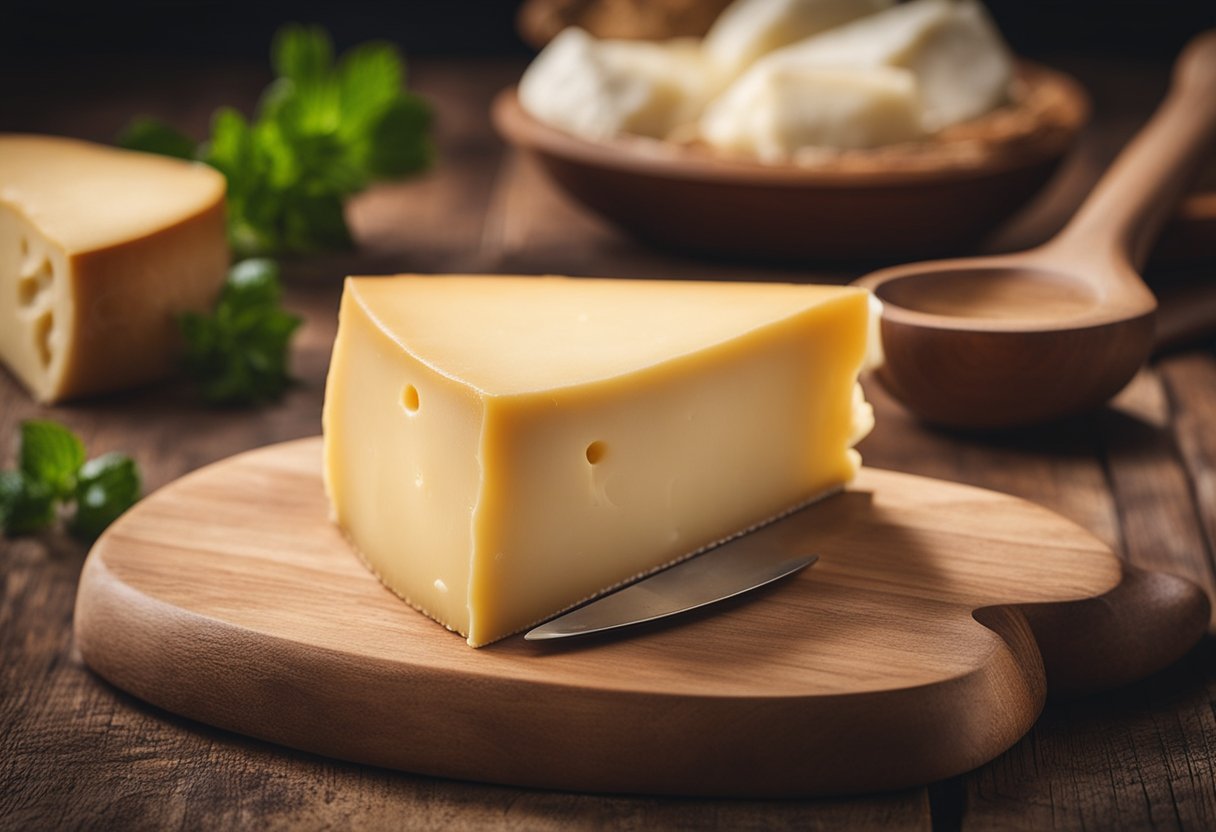
As someone who enjoys Gruyère cheese, I am interested in knowing its nutritional information. Here are some key points to consider:
- Protein: Gruyère cheese is a good source of protein, with 8 grams of protein per 1-ounce serving.
- Calcium: Gruyère cheese is also a good source of calcium, with 222 milligrams of calcium per 1-ounce serving. Calcium is important for maintaining strong bones and teeth.
- Vitamin A: Gruyère cheese contains a small amount of Vitamin A, with 93 international units (IU) per 1-ounce serving. Vitamin A is important for maintaining healthy vision and skin.
- Serving: It’s important to keep in mind that a 1-ounce serving of Gruyère cheese contains 117 calories, 9 grams of fat, and 0.1 grams of carbohydrates.
While Gruyère cheese is a tasty addition to many dishes, it’s important to keep portion sizes in mind to avoid consuming too many calories and fat.
Additionally, those who are lactose intolerant should be aware that Gruyère cheese does contain lactose. Overall, Gruyère cheese can be enjoyed in moderation as part of a healthy and balanced diet.
Frequently Asked Questions
What are some good recipes that use Gruyere cheese?
Gruyere cheese is a versatile cheese that can be used in a variety of recipes. Some popular recipes that use Gruyere cheese include quiches, gratins, and fondues.
It is also a great cheese to use in sandwiches, omelets, and macaroni and cheese. One of my favorite recipes that use Gruyere cheese is French onion soup.
The cheese’s nutty and creamy flavor complements the soup’s rich and savory taste.
What are some cheeses that are comparable to Gruyere?
If you are unable to find Gruyere cheese, there are some cheeses that are comparable in flavor and texture. Comte, Beaufort, and Emmental are all semi-hard cheeses that have a nutty and sweet flavor, similar to Gruyere cheese.
These cheeses can be used as substitutes in recipes that call for Gruyere cheese.
How would you describe the flavor of Gruyere cheese?
Gruyere cheese has a distinct flavor that is nutty, sweet, and slightly salty. The cheese’s flavor becomes more complex and earthy as it ages.
Young Gruyere cheese has a creamy and nutty taste, while aged Gruyere cheese has a sharper and more intense flavor.
Is Gruyere cheese pasteurized?
Most Gruyere cheese available in the United States is made from pasteurized milk. However, some specialty cheese shops may carry unpasteurized Gruyere cheese.
It is important to check the label or ask the cheesemonger if you are unsure.
Where can I buy shredded Gruyere cheese?
Shredded Gruyere cheese can be found in most grocery stores in the cheese section. It is also available online through various retailers.
However, it is important to note that freshly grated Gruyere cheese has a better flavor and texture than pre-shredded cheese.
Can Gruyere cheese be used as a substitute for other types of cheese?
Yes, Gruyere cheese can be used as a substitute for other types of cheese in recipes.
Its nutty and sweet flavor makes it a great substitute for cheeses like Swiss or Emmental. It can also be used in place of Parmesan cheese in pasta dishes or on top of salads.



